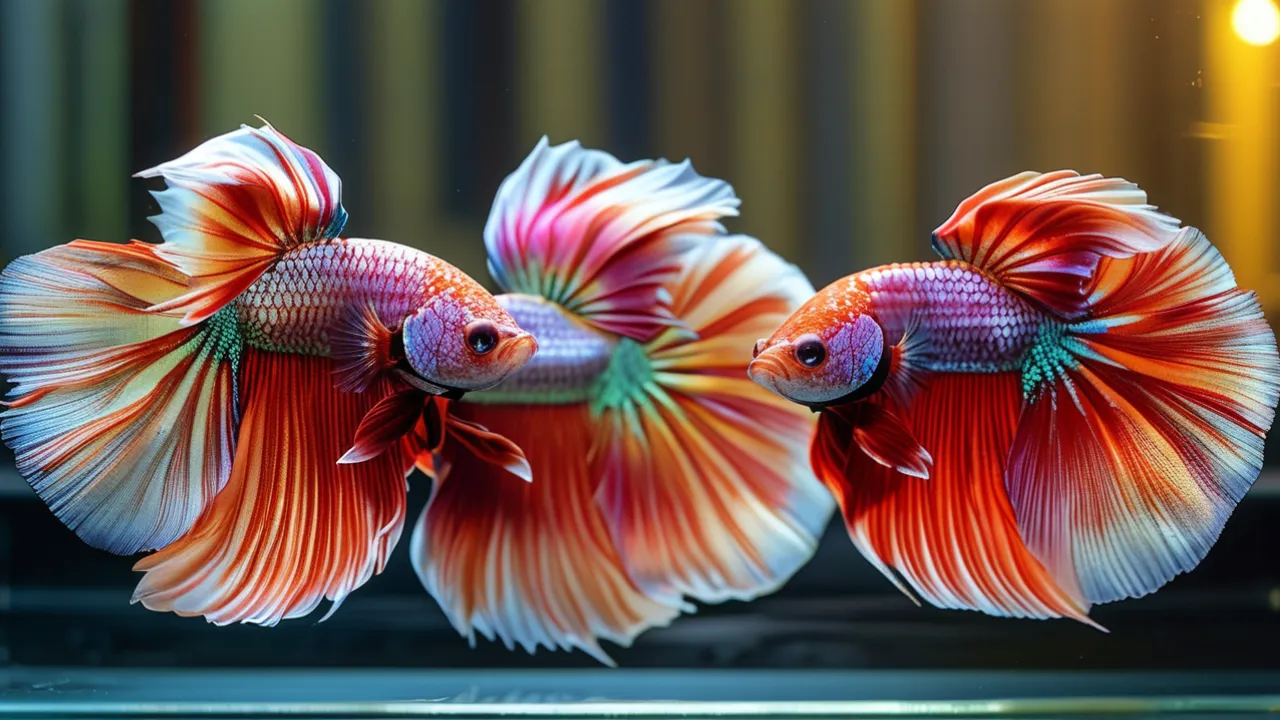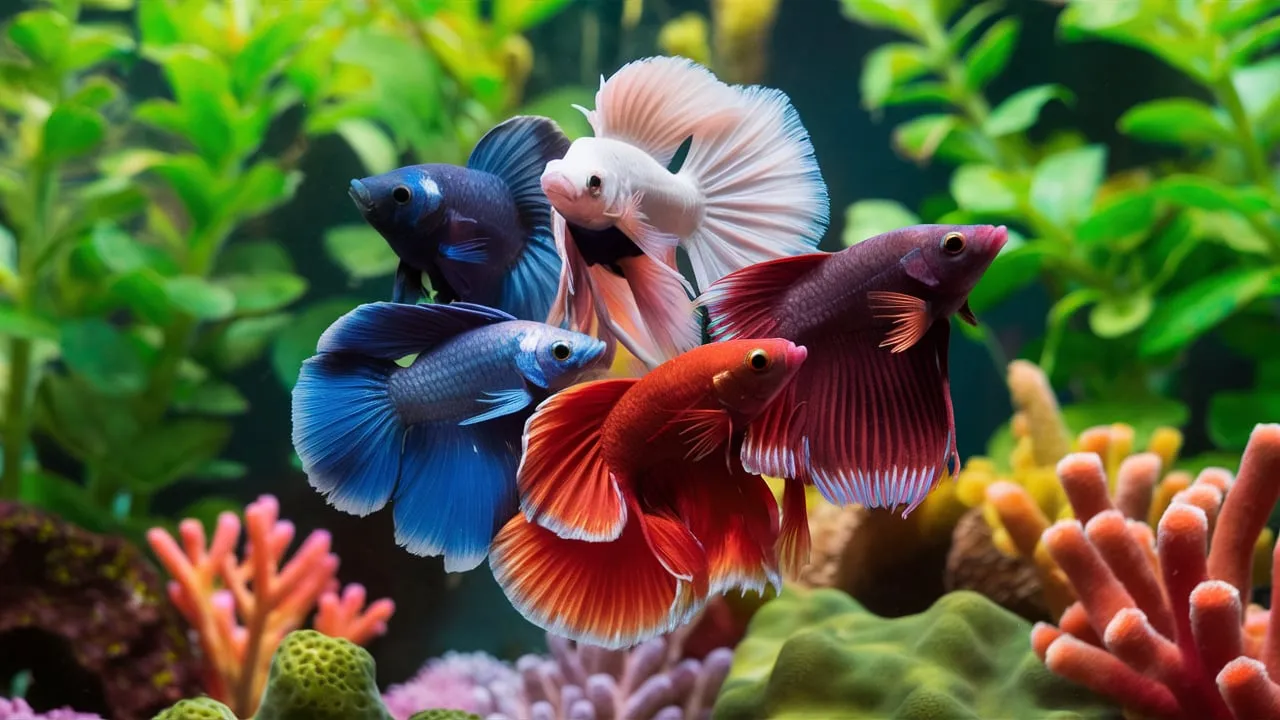If you’re looking to enhance your Betta fish aquarium, understanding Betta Fish Companions is essential. Betta fish, known for their vibrant colors and unique personalities, can be both captivating and challenging to house with other species. Betta Fish Guide will explore the best tank mates for Betta fish, ensuring a harmonious aquatic environment.
Understanding Betta Fish Behavior
The Nature of Betta Fish
To choose appropriate companions, it’s crucial to understand betta fish behavior:
- Territorial Instincts: Male bettas are known for their territorial nature, especially towards other brightly colored or long-finned fish.
- Aggression Levels: While some bettas are more docile, others can be quite aggressive, particularly males.
- Stress Factors: Bettas can become stressed by fast-moving or fin-nipping tank mates.
- Space Requirements: Bettas need their own territory and places to retreat.
Myth vs. Reality: Can Bettas Have Tank Mates?
Let’s address a common misconception:
- Myth: Bettas must always be kept alone.
- Reality: While bettas can thrive solo, many can peacefully coexist with carefully chosen tank mates in an appropriately sized aquarium.
Factors to Consider When Choosing Betta Fish Companions
Tank Size and Setup
Before introducing any companions, ensure your tank meets these criteria:
- Minimum Size: At least 10 gallons for a community setup
- Filtration: Efficient system to handle increased bioload
- Hiding Spots: Plenty of plants and decorations for territory establishment
- Water Parameters: Stable conditions suitable for all inhabitants
Compatible Temperaments
Look for fish that are:
- Peaceful and non-aggressive
- Not known for fin-nipping
- Similar in size or smaller than your betta
- Comfortable in the same water conditions

Betta Fish Companions: Top 10 Compatible Fish for Betta Tanks
Here’s a list of fish that are generally considered good betta tank mates:
Corydoras Catfish
- Size: 1-3 inches
- Temperament: Peaceful bottom-dwellers
- Why they work: Occupy a different part of the tank
Neon Tetras
- Size: Up to 1.5 inches
- Temperament: Peaceful schooling fish
- Why they work: Small, non-threatening, and add color
Harlequin Rasboras
- Size: 1.5-2 inches
- Temperament: Gentle schooling fish
- Why they work: Natural tank mates in the wild
Kuhli Loaches
- Size: 3-4 inches
- Temperament: Shy and peaceful
- Why they work: Nocturnal bottom-dwellers that stay out of the betta’s way
Otocinclus Catfish
- Size: 1-2 inches
- Temperament: Peaceful algae eaters
- Why they work: Help keep the tank clean without bothering the betta
Ember Tetras
- Size: Up to 0.8 inches
- Temperament: Peaceful and active
- Why they work: Too small to be seen as a threat
Pygmy Corydoras
- Size: 1 inch
- Temperament: Peaceful and sociable
- Why they work: Tiny size and bottom-dwelling habits
Snails (Nerite or Mystery)
- Size: Varies by species
- Temperament: Non-threatening
- Why they work: Help clean the tank and don’t compete for space
African Dwarf Frogs
- Size: 1-2 inches
- Temperament: Peaceful and entertaining
- Why they work: Occupy different areas of the tank
Ghost Shrimp
- Size: 1-1.5 inches
- Temperament: Peaceful scavengers
- Why they work: Help clean the tank and provide entertainment

Fish to Avoid as Betta Companions
While many fish can coexist with bettas, some should be avoided:
- Other Betta Fish: Especially male bettas, as they will fight
- Guppies: Their colorful tails may provoke aggression
- Tiger Barbs: Known fin nippers
- Goldfish: Require different water conditions and grow too large
- Angelfish: Can be aggressive and compete for territory
Creating a Harmonious Betta Community Tank
Step-by-Step Guide to Introducing New Tank Mates
- Quarantine New Fish: Always quarantine new additions for 2-4 weeks to prevent disease spread.
- Rearrange the Tank: Before adding new fish, rearrange decorations to disrupt established territories.
- Introduce at Night: Add new fish when the lights are off to reduce stress.
- Monitor Behavior: Watch closely for the first few days to ensure peaceful coexistence.
- Have a Backup Plan: Be prepared to separate fish if aggression occurs.
Maintaining a Healthy Community
- Regular Water Changes: Increased bioload means more frequent maintenance.
- Balanced Feeding: Ensure all fish receive appropriate nutrition without overfeeding.
- Provide Hiding Spots: Maintain plenty of plants and decorations for all inhabitants.
- Monitor Water Parameters: Test regularly to ensure stable conditions.
Expert Insights on Betta Fish Companions
We consulted Dr. Sarah Johnson, a renowned aquatic veterinarian specializing in tropical fish, for her professional insights:
“When considering companions for betta fish, it’s crucial to understand that each betta has a unique personality. While some may tolerate or even enjoy the company of other fish, others may become stressed or aggressive. The key is to introduce potential tank mates slowly and carefully, always being prepared to separate them if necessary.”
Dr. Johnson emphasizes the importance of tank size: “A larger tank not only provides more swimming space but also helps dilute aggression and territorial behavior. I recommend a minimum of 20 gallons for a betta community tank to ensure all inhabitants have enough space to establish their territories.”
Conclusion
Choosing the right companions for your betta fish can transform your aquarium into a diverse and fascinating underwater world. By understanding your betta’s needs, selecting compatible tank mates, and providing proper care, you can create a harmonious community that brings joy and beauty to your home.
Remember, every betta is unique, and what works for one may not work for another. Patience, observation, and flexibility are key to successful betta fish companionship. At Betta Fish Guide, we encourage responsible and thoughtful fishkeeping practices that prioritize the well-being of all aquatic inhabitants.

Related Posts
Are Betta Fish Nocturnal? Mystery of Betta Sleep Patterns
Shrimp Tank Mates: Choosing The Right Companions
Are Fish Omnivores? A Look at Fish Feeding Habits